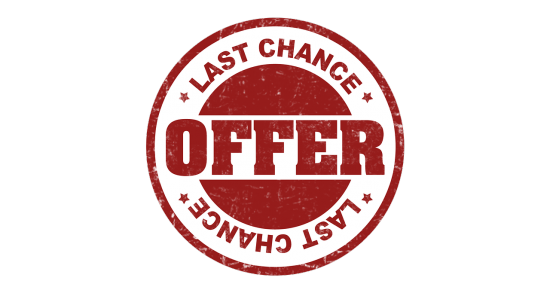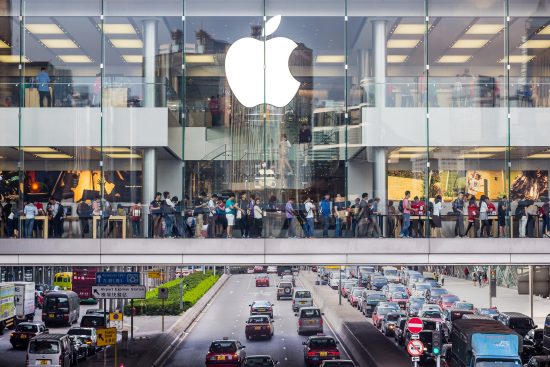Imagine it’s just weeks before the holidays.
With your shopping list in hand, you set off to brave the teeming crowds at the mall. Maybe you’re excited. Maybe you’re dreading it…
But those presents aren’t going to buy themselves!
Some people live for shopping in retail stores. Others (I’m raising my hand here) would rather stay in our stretchy sweatpants and order everything online.
Brands like Amazon have transformed what the retail landscape looks like. Yet, despite this massive upheaval, retailers continue to find success using time-tested marketing principles.
They work on us all the time.
Most people are completely unaware of them.
Once we identify those principles, we can apply them to build stronger connections with customers in our own businesses.
So let’s dig in.
Time-Tested Techniques We Can Adapt for Our Own Businesses
Selling clothes, shoes, or electronics requires a different approach than marketing specialized services, like web design.
But the psychological principles driving sales are the same. Which means we can adapt techniques of the most successful retailers and use them for ourselves.
These marketing tactics capitalize on unique quirks of human psychology. Some people see them as sleazy and manipulative. While they can be used like that, there are tons of creative ways you can adapt them to get better marketing results – and still keep your conscience clean.
Image credit: MichaelGaida
1. Strategic Pricing Hacks
Retailers live and die by their margins. The higher they are, the better their chances of success.
Most retailers – from grocery stores and tiny e-commerce shops, to mega corporations like Walmart – use psychology to price their products strategically.
Our minds are incredible tools, but they have plenty of quirks that, when triggered, make us more likely to feel like we’re getting a good deal and to buy.
Here are just a few of retail’s favorite pricing hacks:
- Anchoring. This principle describes how we assess value by using the first price we see as a guide. By displaying very expensive products next to more affordable ones, the second group seems like a better deal. So if Best Buy displays a 72-inch TV for $1400 next to a 68-inch TV for $1200, buyers feel they’re getting a better deal on the second because they judge it with the $1400 anchor. Even though it’s just a little cheaper than the first.
- Left-digit bias. Notice how almost everything is priced at “$5.99,” “$19.99,” or “$79.99?” That’s intentional. We favor the left-most digit more strongly than the ones that follow. Even though something is just one cent away from six dollars, our mind focuses on the five. This makes items seem more affordable – and easier to justify buying.
- “Discounted” prices. Here is where some retailers get sleazy. By displaying an “original” price with a line slashed through it next to a “discounted” price, shoppers feel like they’re getting a bargain. This is fine if the item usually sells for the original price. But some retailers release products without ever intending on doing that. In other words, the discount price is the price they planned all along.
These are just small tweaks, but when you combine them they can create dramatic results. Here’s a great article from Greg Ciotti on more pricing hacks if you’re interested.
Image credit: cbr600det
2. Loss Leaders and Giveaways
In a world where we can order everything at the click of a mouse, brick and mortar retailers are hard-pressed to get foot traffic.
Just getting people in the store is a huge challenge. That’s why so many retailers offer loss leaders or giveaways. These great (or free) deals motivate customers to show up, and many will buy more products during the trip.
These financial incentives vary depending on the retailer and their typical customers. Whole Foods might heavily discount turkeys before Thanksgiving. Victoria’s Secret gives away free pairs of underwear. Bed Bath & Beyond mails out 20 percent off coupons.
Yes, this comes at a cost. But savvy retailers consider it an investment. They know that building goodwill (and stronger relationships) will ultimately pay off in more purchases and repeat visits.
We can do this too. Sometimes it takes just a bit more motivation to get interested prospects off the fence.
Here are just a few possible giveaway and loss leader ideas:
- Cheat sheets or checklists
- Coupons
- Free ebook/courses/digital content
- Free tool or piece of useful software
- Short consultation
- Trial period of product
Image credit: domeckopol
3. Letting Shoppers Play with Products Before Buying Them
Walk into a Yankee Candle or Bath & Body Works.
What happens?
You’re instantly blasted with dozens of powerful scents. As you mill about the store, inviting fragrances draw you in. Some of them smell so good you just want to open them up and inhale.
And you can!
These retailers encourage it by leaving plenty of sample or “tester” products. Not only can you smell some of that hand lotion or moisturizer. You can even put some on.
Having these tactile experiences actually motivates people to buy. Play with items first creates a deeper emotional connection. When I worked at Barnes & Noble back in college, our manager was always on us about picking books off the shelves and putting them in the customers’ hands.
This is tougher to do online because shoppers can’t just pick up a pair of shoes or fancy dress. But brands like Zappos and ModCloth replicate the experience by using multiple camera angles and allowing customers to pick – and visualize – custom colors and styles.
We might not need to go to those lengths to get customers to buy. Especially if we’re providing services. But whenever we can, we help our cause by showing our offer in action. Ask yourself how you can add screenshots, videos, and other media to give people a taste of the experience before they buy.
Image credit: Robert_z_Ziemi
4. Educating Customers to Get More out of Their Products
The top retailers aren’t just trying to sell you a product once and have you disappear forever. They understand they’re building a long-term relationship.
For those long-term relationships to be as meaningful as possible, it’s key that customers get everything they can out of their purchases. That way they’re motivated to come back for more!
Smart retailers educate their customers and empower them to use their purchases more effectively. Think about the genius bar and free classes offered in Apple stores. The customer has already bought something. But Apple makes an effort to show them how to get the most from it. The deeper these products are integrated into customers’ lives, the better the chances of them buying again.
This doesn’t have to be full-blown classes either. Brands also use basic content marketing to educate prospects about products before they buy them. One grocery store posted information about five different kinds of shrimp (along with cooking recommendations) and increased their sales significantly.
We can’t just assume our customers understand the nuances of our products or will figure them out on their own. Through a combination of content marketing and customer support, we can show people how to use our products to their fullest while making them feel valued.
It’s a shift in perspective. Instead of seeing the transaction as the endpoint, it’s just another milestone in a longer relationship. Keep serving customers after their wallets are closed, and it won’t be long before they’re open again.
Image credit: 1588877
5. Baking Marketing into the Experience
My wife is obsessed with the shoe store Steve Madden.
So, when they gave her a reusable bag after she bought some boots, I didn’t pay much attention. Until one day when I was at the grocery store and realized I had the bag with me for my groceries. I was a walking Steve Madden ad – without even noticing it!
This is retail genius. Brands like Whole Foods and Trader Joe’s (or give away) reusable tote bags or other swag. Their customers become brand ambassadors every time they go out with these things. Marketing is “baked in” to the customer experience.
We can do this too!
It takes a little creativity to get started, but I’m sure you can brainstorm ways to bake in marketing to your business process.
This can be very powerful because the baked-in element serves as a reminder for the customer where they bought something. And when their friends notice it, an endorsement from a happy customer is the best marketing you could ask for.
Present Your Business in a More Compelling Way
Retail stores look a lot different than they did just a decade ago. As e-commerce expands and evolves, we can only expect more dramatic changes as the pressure mounts.
Some brands will struggle. Others will adapt. The ones who thrive will find new ways to apply time-tested marketing principles. Technology and customer tastes change. But human psychology remains the same.
We can use these too.
Regardless of your industry, you can find ways to tap into psychological triggers and build deeper relationships with customers. You’ve spent countless hours honing your experience and developing something valuable to sell. Now’s the time to present it in a way that helps others see just how valuable it is!






